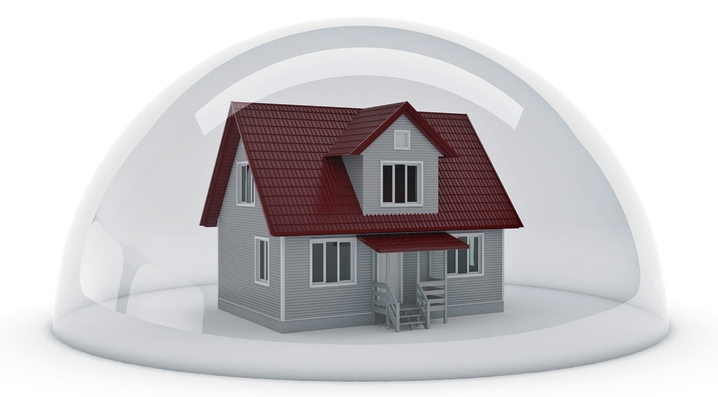It’s a question that arises often enough and reflects the difficulty that some have in processing both the high prices (relative to average earning power) and healthy appreciation rates observed in Addis Ababa. The question is also most often posed by those who currently reside abroad or have done so previously, enough to have experienced such occurrences in more developed markets which occur periodically – the most notable of which was the American housing crash beginning in 2007.
It’s a legitimate question. After all, as we have noted in a prior article – the price of a standard G+1 villa in Ayat has increased from about ETB 460,000 in 1996 by over 2,000% through the year 2018, to an average of about ETB 9 million. Furthermore, prices continue to rise inexorably defying slower economic growth amid a turbulent period in the Ethiopian political space.
In fact, that prices continue to rise even during a period of uncertainty is one indication that we do not have a bubble in the Ethiopian market. By their very nature, such asset bubbles are fueled by overconfidence in the accelerated march upward of prices more so than by the organic demand for the product itself. That is just one aspect of the market here which disproves the notion that a bubble exists or indeed can even do so in the near to mid term as far as real estate in Ethiopia is concerned.
Bubbles Defined
While we have pointed out that the American housing crisis of 2007 is the most prominent example of a bubble driven crisis in recent memory (some might argue it was the biggest ever), it was far from a quintessential real estate bubble. However, it is quite likely that future bubbles in developed economies will have similar attributes regarding the linkages with complex financial instruments (in this case the infamous CDOs or Collateralized Debt Obligations) which greatly exacerbated and conflagrated the housing bubble. At its apex, the financial crisis born from this bubble threatened to bring down global financial markets & many economies, requiring massive bailouts led by the US government. In the US alone, the total cost incurred by this crisis (including lost household wealth, etc.) was estimated to be $19.2 trillion as of 2012.
So what would a typical bubble look like? Here are some references to the defining characteristics of a housing bubble:
“A housing bubble is a run-up in housing prices fueled by demand, speculation and exuberance. … Speculators enter the market, further driving up demand. At some point, demand decreases or stagnates at the same time supply increases, resulting in a sharp drop in prices — and the bubble bursts.”
Investopeadia
“A defining factor in a housing market bubble is home price growth that is unsustainable or unsupported. ….Thus, unlike in the subprime boom, there’s equity that is supporting price growth along with good local economic drivers like job growth.”
Forbes
Herein are a few critical elements that a housing bubble must have:
- A housing market driven to a significant extent by short term speculators who purchase real estate with the expectation of significant appreciation in the near future at which point, the asset would be sold to recognize the attendant profit
- A plentiful supply of credit without which speculators would be hard pressed to execute transactions in volume and perhaps even more significantly without the servicing of which, there might not need to be a compelling reason to sell
- Prices that have a clear separation from the fundamental economics of real estate – in particular, rental yields in the low single digits implying that it would take more than 20 years of rental income to recoup the purchase price. In other words, that a property is overvalued.
No Bubbles to Burst in Addis
At the risk of restating the obvious, many of the factors that define or fuel the creation of a housing bubble are just not present in Ethiopia. And won’t be for a while. This is not to say that housing prices can’t come down. But they certainly won’t have a steep fall as is the case when a bubble bursts. And even for prices increases to moderate (which is much more likely here than an outright decline for at least a decade or more), we would have to arrive at a supply landscape which is beginning to catch up with demand. In fact, what is more likely to happen is that the rate at which prices increase will moderate in the mid to longer term with actual pricing declines unlikely except in the much longer term.

Secondly, a significant portion of the price increases for real estate are due the continued depreciation of the currency, official and otherwise. In other words, the actual price increases in ‘real’ terms (i.e. when calculated in US dollar terms that is), is much less than might be superficially visible. On a related note, given the currently yawning gap between official and unofficial exchange rates, a secondary effect of that means that dollar denominated prices are now much higher to account precisely for that gap. This all drives up the continuing perception of runaway prices while there are relatively sound reasons for these increases, tied in many cases to explicit policy actions by government.
The absence of anything like significant mortgage facilities in Ethiopia is another reason why we can safely conclude that a bubble doesn’t exist here and cannot until they are much more widely available. When credit is used to purchase a home, a slight economic downturn, the loss of a job in the household or other significant financial event can act as a very forceful push for homeowners to sell real estate for fear of foreclosure on their mortgage supported house. The presence of compelling, systemic need of homeowners to sell at scale, is precisely the one, inescapably necessary factor which catalyzes and indeed characterizes a real estate bubble. Whereas the vast majority of housing in Ethiopia (with the exception of the government sponsored IHDP and 40/60 programs) are purchased on a cash basis so it is very unlikely that such a widespread sell off can in fact occur.
Ironically, the very programs developed by government to address housing affordability, are the ones that may hold the most risk for an asset bubble to begin forming in the longer term given the prevalence of easy credit which is the basis for the benefits they accrue to buyers. So long as there is a dearth of credit/mortgage facilities at scale, it is difficult to see how a real estate bubble can form in Addis. Imagine for a moment what it would be like if banks suddenly started offering 30 year mortgages with 5% down payments (not far off from what most banks offer their employees). The short term result would be a massive increase in effective demand which would actually act to drive prices upwards at even faster levels before some stabilization. Of course, the rather small size of Ethiopia’s banking sector – all of the banks combined could finance no more than 150,000 homes while in Addis, latent demand alone runs into the hundreds of thousands of homes to begin with while new demand itself is 30-40 thousand units annually – precludes that eventuality. Until foreign entrants push that size up rather considerably.
So to all the naysayers who claim that Addis real estate is one giant bubble…sorry to burst your bubble but there isn’t one here to burst just yet.

